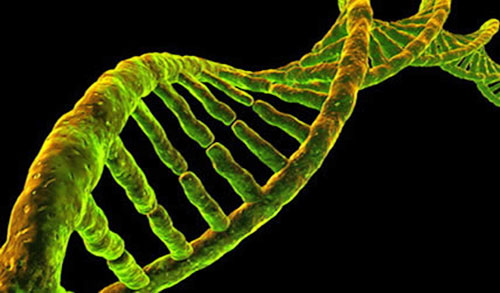|
from
PreventDisease Website
The inclusion of genetically modified (GM) plants in the human diet has raised concerns about the transfer of transgenes from GM plants to humans.
Contrary to the claims by biotech giants such as Monsanto, a report in PLOS One shows that that meal-derived DNA fragments are large enough to carry complete genes as they enter the human circulatory system.
In some of the human
samples studied the relative concentration of plant DNA was higher
than the human DNA.
The potential effects of horizontal gene transfer on human health have always been stated as an important item in the safety assessment of genetically modified organisms.
However, the persistence in
the human gut of DNA from dietary
GM plants has been relatively unknown since their
inception.
During digestion proteins and
DNA are thought to be degraded into small constituents,
amino acids and nucleic acids, respectively, and then
absorbed by a complex active process and distributed to
various parts of the body through the circulation system.
Depending on the extent of processing,
various fractions of DNA molecules of varying size may be
present in the consumed product, even in processed food such
as corn chips and chocolate.
In
addition, pathogens may be self-sufficient for certain
nutritional compounds or be able to sequester them.
Various mechanisms exist for gene transfer between microorganisms, such as phage transduction, conjugation, and transformation by free DNA.
The possible scenario for gene transfer between GM crops and microorganisms is, however, limited to transformation with free DNA. Blood is not free of DNA. White blood cells have nuclei that contain genetic material, which gives the dominant part of the DNA in a full blood sample.
Beyond the DNA contained in the white blood
cells the cell free blood plasma contains DNA, too.
This could destabilize the genome, and also
possibly create new viruses, and thus dangerous new
diseases. (Refs: Green, A.E. et al (1994) SCIENCE 263:1423;
Osbourn, J.K. et al (1990) VIROLOGY 179:921.)
Potential health risks to humans
include the possibility of exposure to new allergens,
obesity, immune-suppression, cancer as well as the transfer
of antibiotic-resistant genes to gut flora. All of these
health risks are facilitated by enzymes within digestive
tract.
For example, foreign DNA fragments were detected by PCR based techniques in the digestive tract and leukocytes
of rainbow trouts fed by genetically modified soybean, and
other studies report similar results in goats, pigs and
mice.
Biotechnology companies erroneously claim that
their manipulations are similar to natural genetic changes
or traditional breeding techniques. However, the
cross-species transfers being made, such as between fish and
tomatoes, or between other unrelated species, would not
happen in nature and may create new toxins, diseases, and
weaknesses.
Genetic research shows that many weaknesses in plants, animals, and humans have their origin in tiny imperfections in the genetic code. Therefore, the random damage resulting from gene insertion will inevitably result in side-effects and accidents.
Scientists have
assessed these risks to be substantial. (Refs: Palmiter,
R.D. et al (1986) ANNUAL REVIEW OF GENETICS 20: 465; Inose,
T. et al (1995) INT. JOUR. FOOD SCIENCE TECH. 30:141.)
The biological process ultimately responsible for random integration is known as illegitimate recombination. DNA integrated at random frequently contains multiple copies and often copies are scrambled. Multiple copies also often induce gene silencing and hence instability in the expression of the introduced genes.
In addition, the DNA integrates at loci of unknown stability and capacity for expression and randomly integrated copies may induce unpredictable and undesirable mutations in the host genome...
Although our understanding of the general biology
of recombination in plants is constantly improving, we still
lack the knowledge for precision engineering of plants'
genes and thus GM engineering may present one of the biggest
threats to human health and the environment.
|

